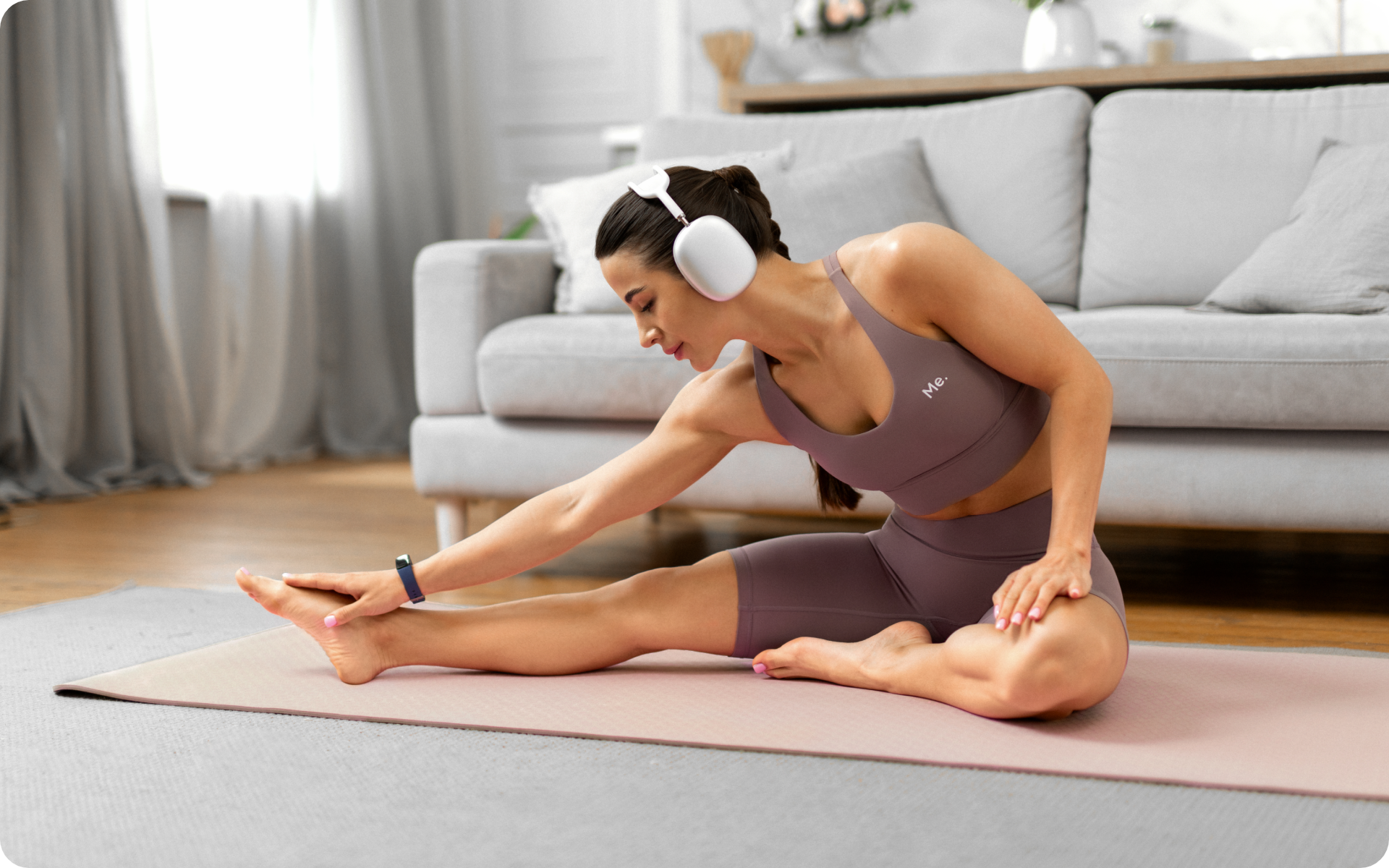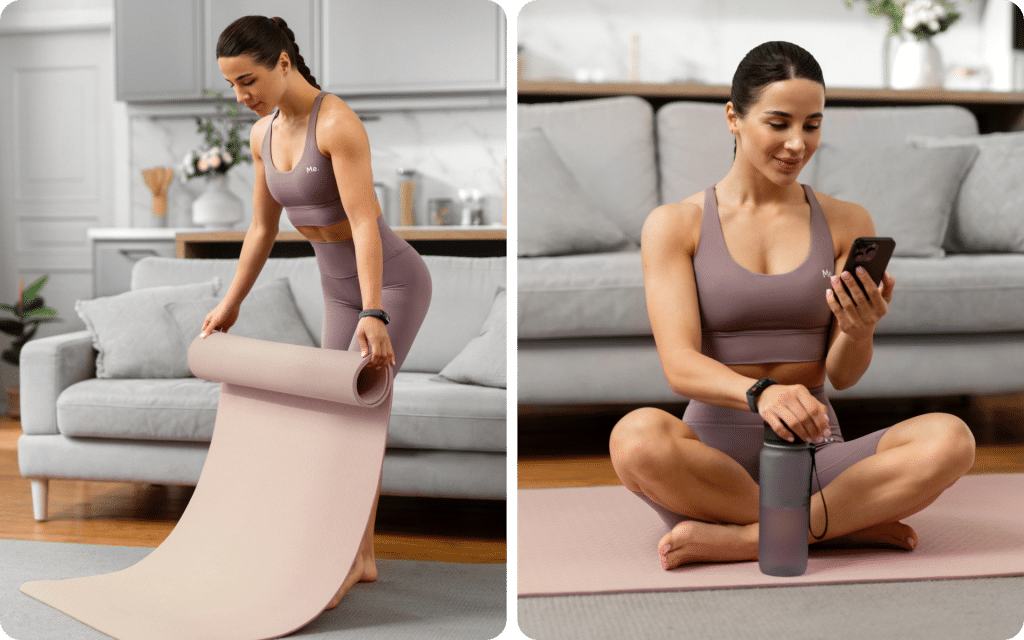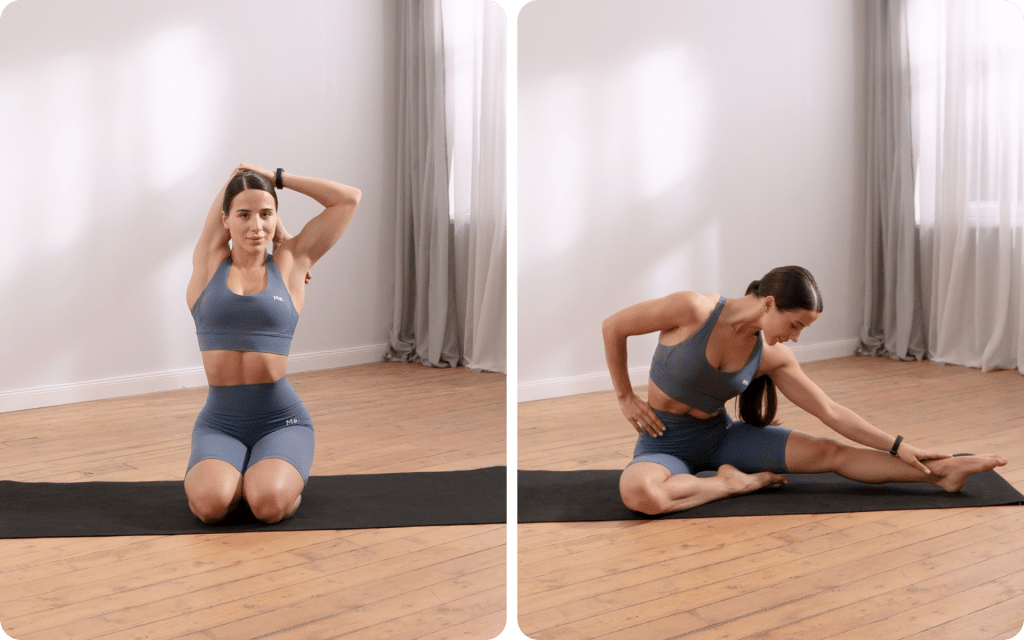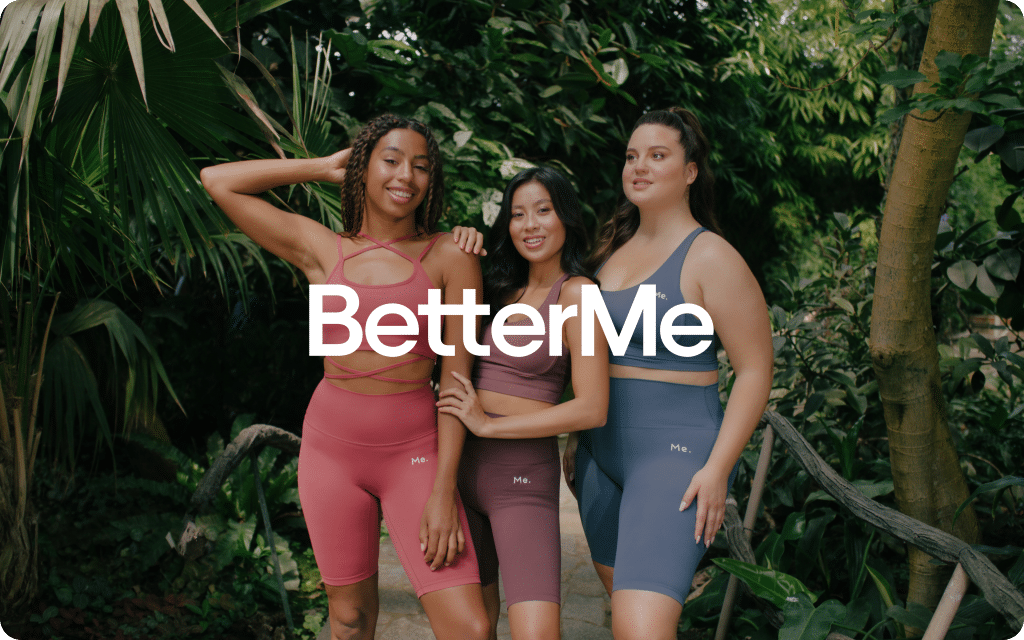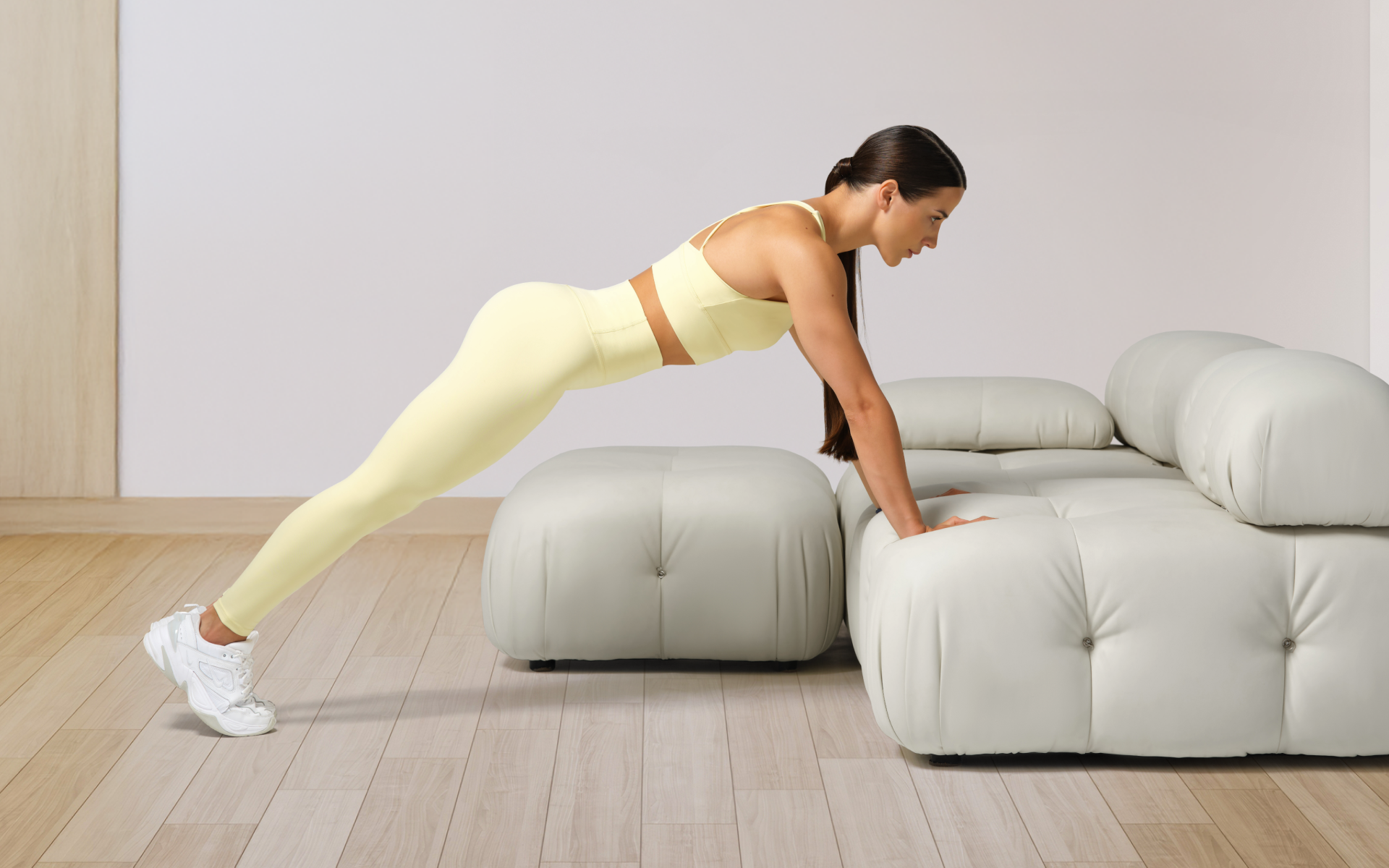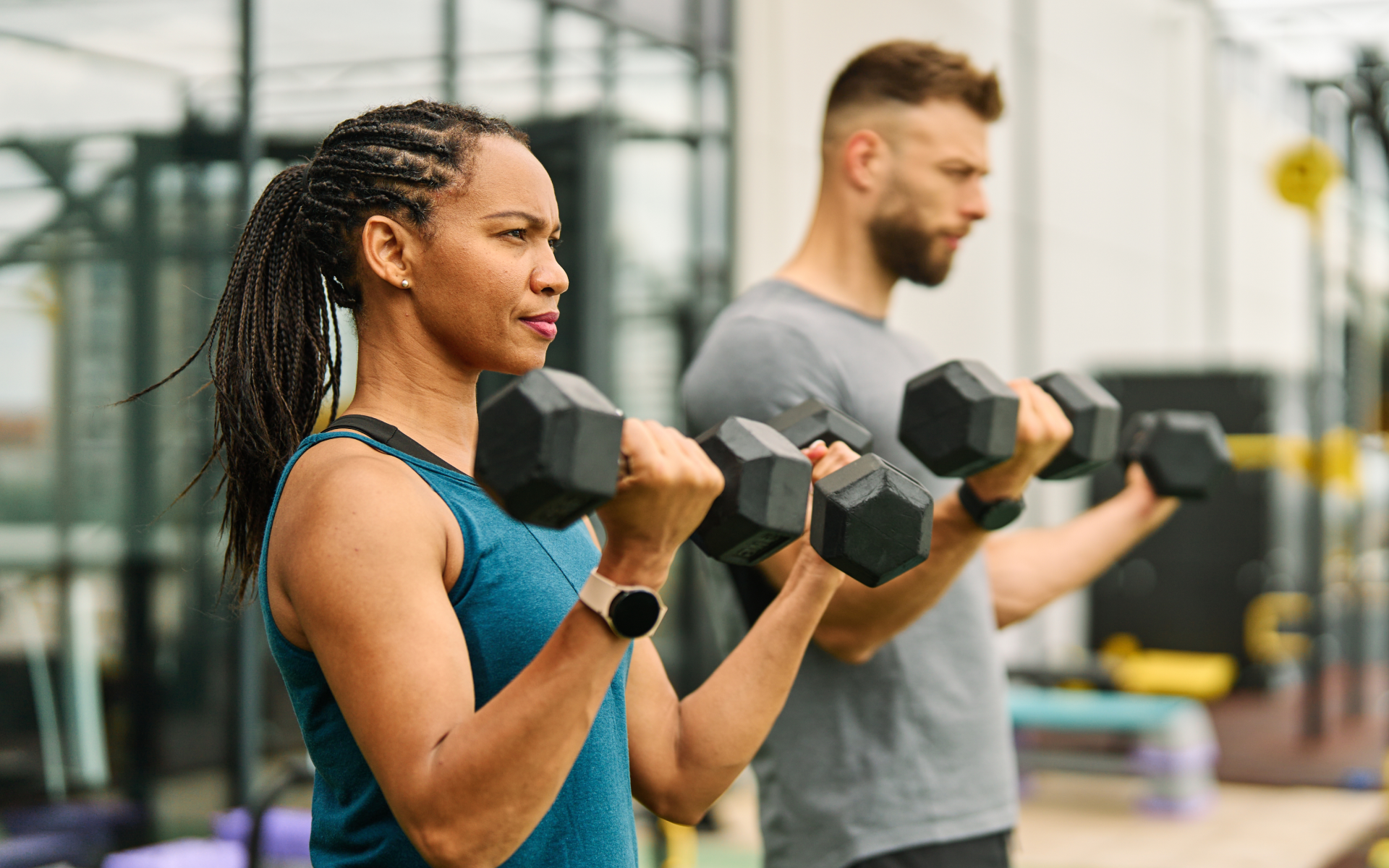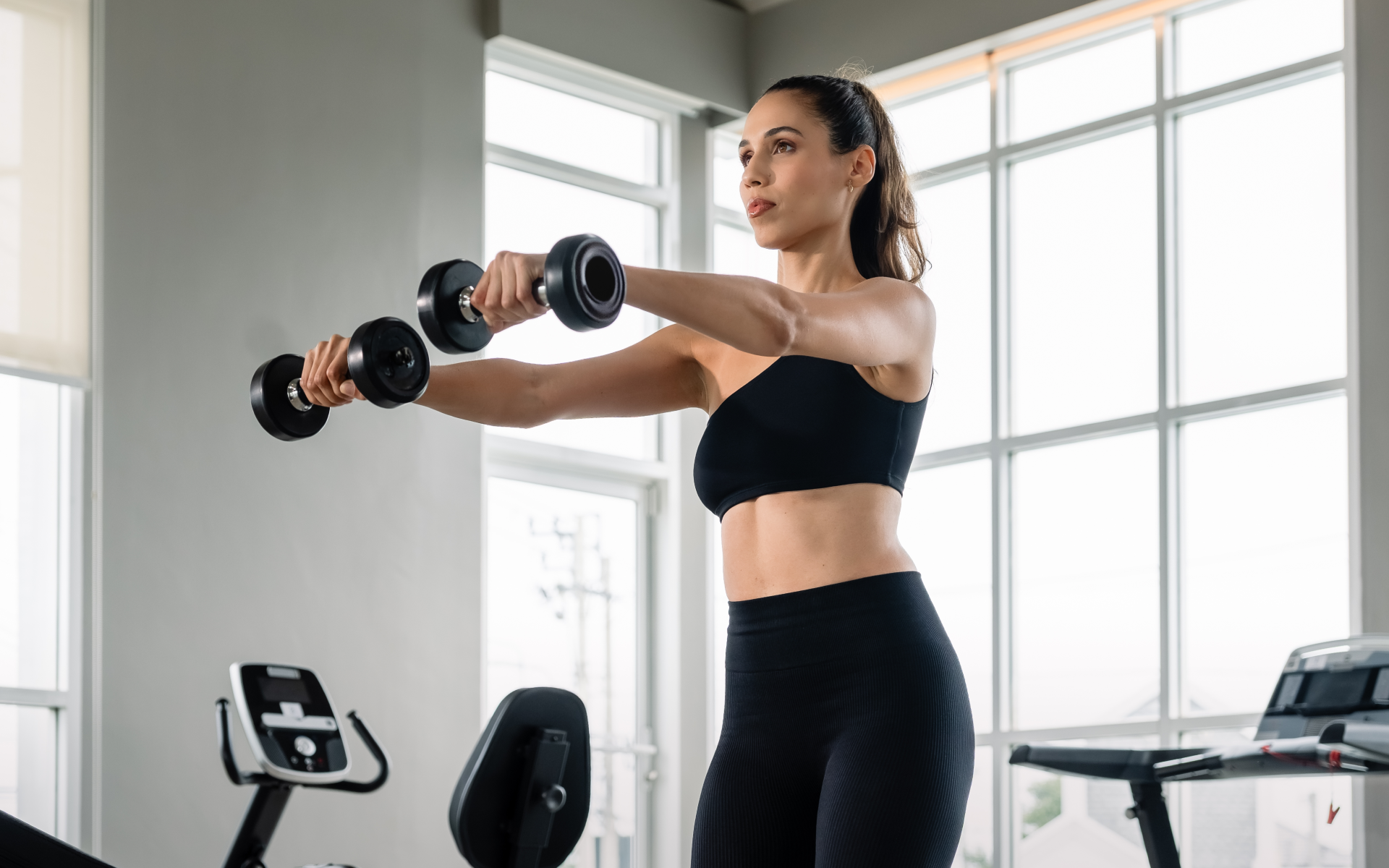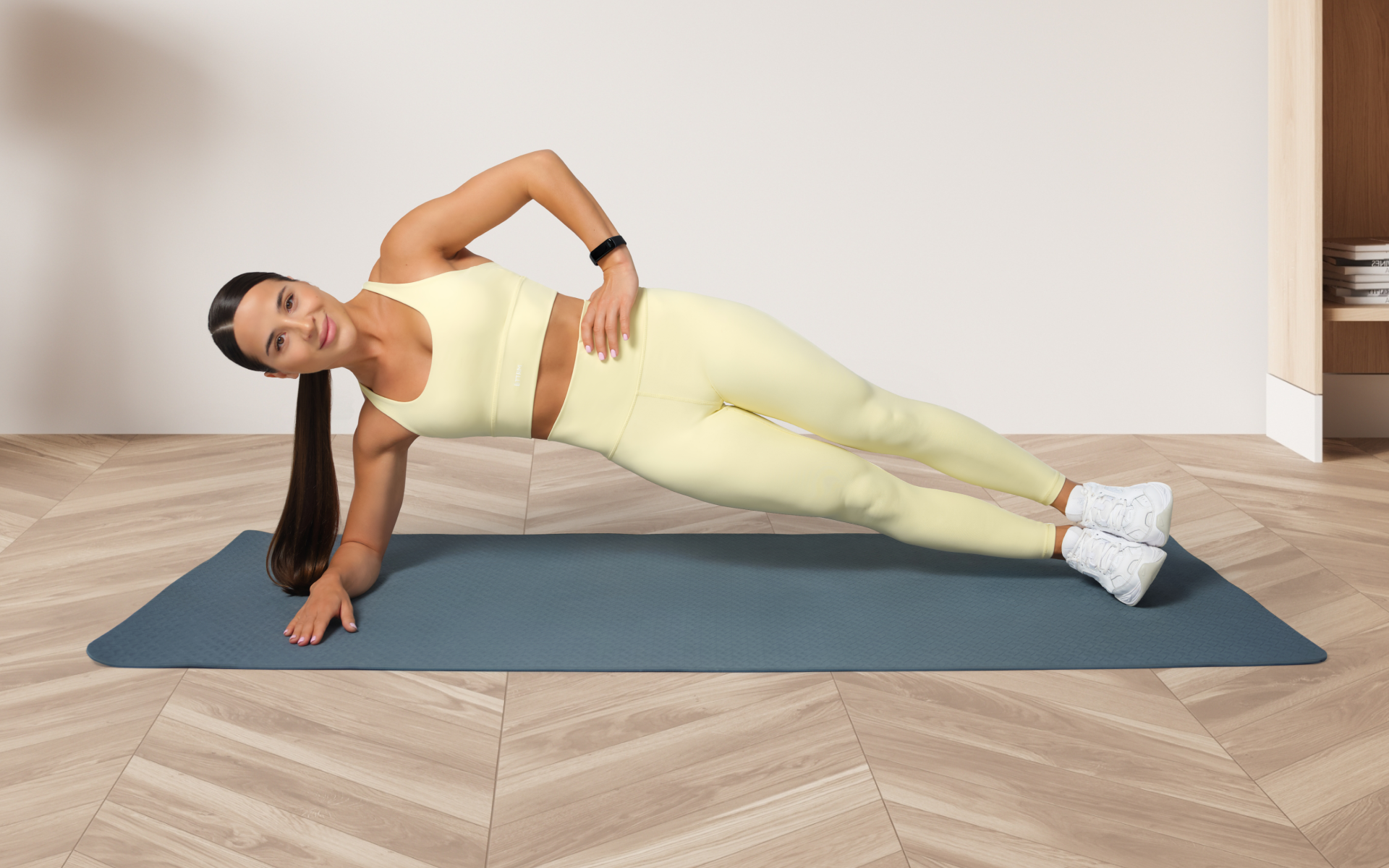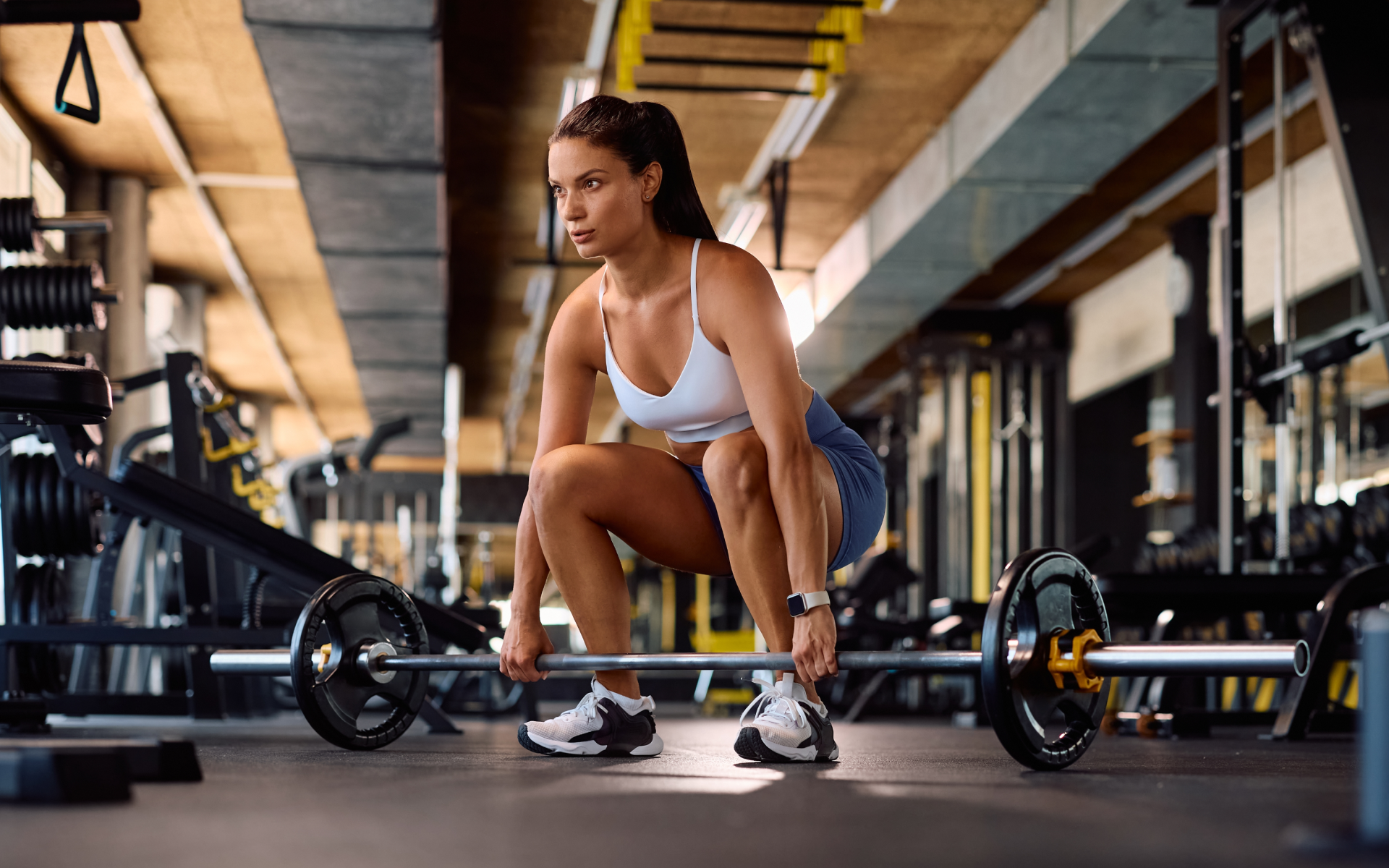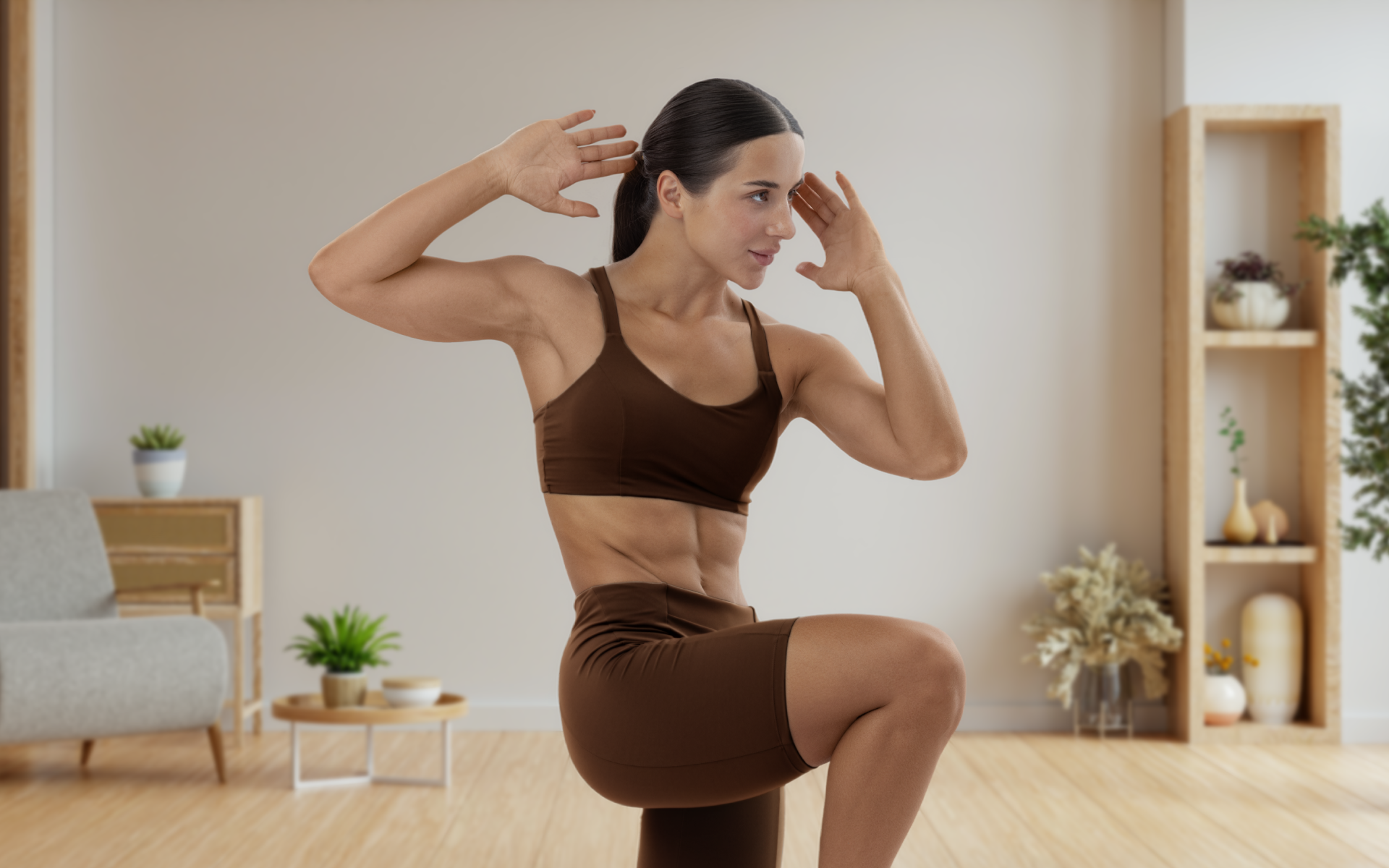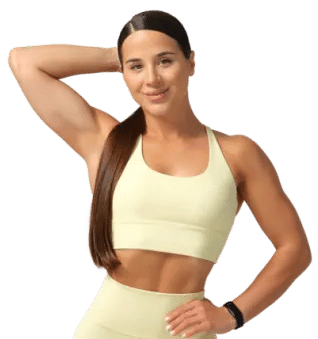Stretching is an important part of everyday life, not just as a part of a well-rounded workout routine. According to experts, you should aim to do stretching exercises at least two to three times a week, but it’s preferable to make daily stretching a habit (1, 2).
A 10-minute stretch routine is a great way to incorporate daily stretching into your day-to-day. Whether you’re looking to increase your flexibility for healthy aging, looking for an active rest routine to keep the muscles limber and the blood flowing, or trying to find an easy way to stay active, a 10-minute stretching routine for increased flexibility is just what you need.
What Is An Everyday 10-Minute Stretch Routine?
A 10-minute stretch routine is a flexibility program that can be done daily – or multiple times a week – and it includes various stretching exercises that target different muscle groups all over the body.
There are many different stretching techniques but the most common are (3, 4):
-
Static Stretching
This consists of stretching a muscle (or group of muscles) to its farthest point and then maintaining or holding that position. This could be a stationary stretch that differs from an active or dynamic stretch which will be discussed below.
This is the opposite of static stretching and it involves actively tightening your muscles and moving your joints through their full range of motion throughout the stretch. These movements are performed in a slow and controlled manner. This flexibility technique is often used for warm-up exercises.
-
PNF Stretching
Also known as proprioceptive neuromuscular facilitation, this technique was originally developed as a method for rehabilitating stroke victims (4). This technique combines the stretching and contraction of a muscle group to provide maximum static flexibility.
It requires a muscle group to be passively stretched, then contract isometrically against resistance while in the stretched position, and then be passively stretched again through the resulting increased range of motion.
Other techniques you may come across include ballistic, active, isometric, and passive stretching.
What Happens If You Stretch Daily?
While some experts claim that you don’t have to stretch if you don’t feel like you need to (5), we say otherwise. Studies and other experts have shown that this activity has benefits that are advantageous not only to performance but also to everyday life. Some benefits you may experience due to everyday stretching include:
-
Increased Flexibility and Range of Motion
Flexibility refers to the ability of a joint (or multiple joints) to move smoothly through an unrestricted, pain-free range of motion. On the other hand, range of motion refers to the extent/limit to which your joints can move in any specific direction.
Multiple studies have shown that stretching, specifically static stretching, can improve your muscle flexibility and increase/elevate the range of motion of your joints (6, 7, 8. One study stated that the longer the stretch duration, the higher the improvements in flexibility with a 60-minute routine offering the best improvements (7).
Therefore, if you’re new to this, start with a simple 10-minute stretch routine for beginners and gradually increase the duration for increased benefits.
-
Improved Performance
If you’re an athlete – or simply train like one – adding stretching to your routine can help you become better at what you do and reach your goals faster. Studies have shown that stretching can help boost your performance, particularly in improving force, jump height, and speed (9, 10).
Note that if you lead a sedentary lifestyle due to daily work or injury, research has also shown that you can use a simple 10-minute morning stretch routine as an effective home-based training program to increase your physical activity levels and counteract significant decreases in strength, flexibility, and jump performance (10).
When it comes to weight loss, progress is made by inches, not miles, so it’s much harder to track and a lot easier to give up. The BetterMe: Health Coaching app is your personal trainer, nutritionist, and support system all in one. Start using our app to stay on track and hold yourself accountable!
-
Better Pain Management
Generally, physical activity and exercise are effective measures for handling chronic pain caused by illnesses such as osteoarthritis, rheumatoid arthritis, fibromyalgia, low back pain, cramping pain in the legs, period pain, mechanical neck disorders, and much more (11).
Studies done on stretching have shown that this form of exercise can also help with pain management. Whether it’s headaches, pain caused by delayed onset muscle soreness (aka DOMS), knee pain, lower back pain, or pain due to back posture that is common with office workers, engaging in this exercise routine can help manage or eliminate the pain (12, 13, 14).
-
Better Sleep
If you struggle to fall asleep at night, incorporating a 10-minute stretch routine before bed could help turn things around for you.
In an older study published in 2014, researchers found that when subjects did a 10-minute low-intensity stretch program right before going to sleep, they saw significant improvements in their sleep quality and stress levels, which suggests that this activity was beneficial for individuals with mild sleep disorders (15).
In a more recent review, researchers found that this activity could lead to improved sleep quality, reduced insomnia, increased sleep efficiency, decreased sleep onset latency and waking after sleep onset, in addition to improved total sleep time. While researchers called for further research on this matter to better determine how it works, the findings cannot be ignored (16).
Check out this article for some effective stretches for stress relief.
-
Better Mental Health
If you struggle with fatigue, mood swings, cognitive issues, burnout, anxious thoughts, and other common mental health problems, doing some stretches could help you manage these concerns. Research has shown that stretching can help improve these conditions and improve your quality of life (17, 18).
Read more: Unlocking the Benefits of Pilates Stretches
How Long Should a Stretching Routine Be?
There are no specific ‘set in stone’ guidelines for how long a stretching session should be. The most common recommendation is that you should aim to hold a stretch for up to 30 seconds and repeat the stretch 2 to 4 times – twice for beginners and up to 4 times for those who are more comfortable with the routine/poses (1, 3).
With that being said, a study published in 2023 in the International Journal of Exercise Science stated that the longer the stretch duration, the higher the flexibility improvements. In the study that compared 10-, 30-, and 60-minute stretch durations, the researchers stated that the best results were seen in the 60-minute duration group (7).
As not everyone has 60 minutes to spare for daily stretches, we would suggest that you start with a simple 5- or 10-minute morning stretch routine.
Is 10 Minutes of Stretching a Day Enough?
Yes, a 10-minute stretch routine is enough. As long as you’re consistent with the program, you’re bound to see improvements in your flexibility, performance, pain management, sleep, and more in due time.
Do You Need Rest Days from Stretching?
It depends. As stretching is such a low-intensity exercise, it can be tempting to do your routine daily and assume that there are no repercussions. However, this may not be the case.
If you’re doing intense stretching sessions, e.g. yoga or Pilates, it would benefit you to take at least 1 to 2 days a week of rest to allow your muscles to rest and recover.
On the other hand, if you’re doing casual stretches and not pushing your body beyond the limit, you likely don’t need to have rest days from this activity.
How Long Does It Take to See Results from Stretching?
As with any other form of exercise, if you remain dedicated and consistent with your routine, you’ll start to see the initial results within the first 4 to 6 weeks. If you keep up the routine past this point, you’ll start to see significant improvements in the coming weeks/months.
Read more: Do Wall Sit Exercises Work For Belly Fat?
What Is an Everyday 10-Minute Stretch Routine for Beginners?
If you’re not sure where to start, here are some simple static and dynamic stretching exercises for a full-body stretch:
-
Neck Rolls aka Neck Circles
-
-
- Start with your hands on your hips, legs shoulder-width apart, and your head facing forward.
- Gently tilt your head to one side and slowly roll it in a circle. Start at the back, across the back of your neck, to the opposite side, and then down toward your chest, before returning to the starting position.
- Repeat this movement in the opposite direction. Ensure that the roll is as smooth as can be without any sudden jerks.
- Do this up to 10 times.
-
-
Arms Circles
These target the upper-body muscles, specifically the shoulder muscles, deltoids, biceps, and triceps.
- Stand upright with your feet shoulder-width apart or sit in a chair with your back straight and your feet on the floor, shoulder-width apart.
- Lift both arms up and out to the side. You should be making a ‘T’ or cross sign.
- Move your arms in a forward circle 10 times, pause, and then move your arms in a backward circle 10 times. This is one set.
- Repeat the above step one or three more times for a full workout.
-
Cross Arm Stretches
This is another upper-body stretch that targets the shoulders, rotator cuff, triceps, and posterior deltoid.
- Stand with your feet slightly less than shoulder-width apart and bring your right arm up to a little below shoulder height.
- Place your left hand on your right elbow and gently pull your right arm across your body using your left hand to support your arm. Hold this position for up to 30 seconds.
- Repeat on the other side. Do this movement 2 to 4 times on each side.
Reasons why BetterMe is a safe bet: a wide range of calorie-blasting workouts, finger-licking recipes, 24/7 support, challenges that’ll keep you on your best game, and that just scratches the surface! Start using our app and watch the magic happen.
-
Standing Side Bends
This is a good core stretch that is specifically for the internal and external oblique muscles.
- Stand tall with your feet shoulder-width apart, face the front, engage your core, and raise your arms up and above your head.
- Make sure you’re not leaning back, then slowly bend your torso to the right. Bend as far as is comfortable and pause.
- Return to the initial position and switch, bending to the left side.
- Go back to the starting position and keep alternating sides. Bend 10 times on each side for 1 set.
- Do this for 2 to 4 sets.
-
Standing Quad Stretch
As the name suggests, this move targets your quadriceps.
- Find a chair, table, or wall to hold on to. This is essential as this exercise will be challenging to your balance.
- After placing one hand on your chosen surface, bend your knee and lift your foot toward your butt. Grasp your ankle with one hand and pull your foot toward your butt cheek.
- Pull on the ankle as far as possible without compromising on comfort. Hold this position for up to 30 seconds.
- Release your ankle and drop your leg to return to the standing position.
- Switch legs and repeat the movement on the other side.
- Repeat the exercise 3 to 5 times with each leg.
-
Sitting Hamstring Stretch
This is the opposite of the quad stretch as it stretches the hamstrings, which are located at the back of the thigh.
- Sit on the ground with your left leg bent at the knee and your foot facing inward.
- Extend your right leg in front of you while keeping it slightly bent at the knee.
- Slowly bend forward at the waist. Make sure your core is engaged and your back is straight.
- Hold this position for up to 30 seconds.
- Come up to the start position and switch legs.
- Repeat 4 times on each leg.
You can also do this stretch on a chair. Simply sit on a chair and place one leg on another chair of the same height in front of you. Keep the other foot firmly planted on the ground.
-
Standing Ankle Circles
If you walk, run, or spend a lot of time on your feet, this is a great dynamic stretch for the ankle joint.
- Start by standing upright with your feet hip-width apart. Keep your arms by your sides or place them on your hips.
- Shift your weight to the right leg and point your left toes down to the ground.
- Slowly start rotating your left foot, making small circles with your ankles.
- Count 5 circles then switch to the other leg to repeat the exercise.
Yes, it does. Stretching/flexibility exercises are among the main types of exercise that people are encouraged to engage in (19). Note that if you want to use stretching exercises for weight loss or muscle strengthening, you must increase the intensity of these workouts. Yoga and Pilates are good examples you can try. Stretching is an exercise that pushes your muscles past their usual limits, which causes microscopic tears in the muscle. This leads to soreness and you require rest to allow them to repair and recover. Either is a good option, so go with whichever option feels best for you. The point is to stretch, so whether you do it in the morning, at night, or several times during the day, it doesn’t really matter. Consistency and proper form are what matter the most. Yes, it is. As mentioned above, researchers have shown that stretching before going to bed can help improve your sleep (15, 16).Frequently Asked Questions
Does stretching count as exercise?
Why am I sore after stretching?
Is it better to stretch every morning or night?
Is it okay to stretch before bed?
” mp4=”https://cdn.betterme.world/articles/wp-content/uploads/2025/05/PilatesOlesia1.mp4″]
The Bottom Line
Whether you’re looking for a warm-up or cooldown routine, a quick active rest day workout, or simply a way to stay a little more active to avoid a sedentary lifestyle, a 10-minute stretch routine is a good program to add to your day-to-day routine.
Remember to hold each stretch for up to 30 seconds and repeat it two to four times. You can always increase the amount of time you spend on a stretch routine, but as a beginner, 10 minutes is enough to get you started. In addition, you should aim for a dynamic stretch warm-up before a workout and then a static stretch cool-down after a workout.
DISCLAIMER:
This article is intended for general informational purposes only and does not serve to address individual circumstances. It is not a substitute for professional advice or help and should not be relied on for making any kind of decision-making. Any action taken as a direct or indirect result of the information in this article is entirely at your own risk and is your sole responsibility.
BetterMe, its content staff, and its medical advisors accept no responsibility for inaccuracies, errors, misstatements, inconsistencies, or omissions and specifically disclaim any liability, loss or risk, personal, professional or otherwise, which may be incurred as a consequence, directly or indirectly, of the use and/or application of any content.
You should always seek the advice of your physician or other qualified health provider with any questions you may have regarding a medical condition or your specific situation. Never disregard professional medical advice or delay seeking it because of BetterMe content. If you suspect or think you may have a medical emergency, call your doctor.
SOURCES:
- 10 stretching exercises to improve your flexibility (2024, bhf.org.uk)
- How much and how often should people stretch? Experts say there’s no one answer. (2024, heart.org)
- CURRENT CONCEPTS IN MUSCLE STRETCHING FOR EXERCISE AND REHABILITATION (2012, pmc.ncbi.nlm.nih.gov)
- Types of Stretching (n.d., web.mit.edu)
- Time to Move From Mandatory Stretching? We Need to Differentiate “Can I?” From “Do I Have To?” (2021, pmc.ncbi.nlm.nih.gov)
- Biomechanical, Healing and Therapeutic Effects of Stretching: A Comprehensive Review (2023, mdpi.com)
- Improvements in Flexibility Depend on Stretching Duration (2023, pmc.ncbi.nlm.nih.gov)
- The benefits of static stretching on health: a systematic review (2024, researchgate.net)
- Does stretching improve performance? A systematic and critical review of the literature (2004, pubmed.ncbi.nlm.nih.gov)
- Using Daily Stretching to Counteract Performance Decreases as a Result of Reduced Physical Activity—A Controlled Trial (2022, pmc.ncbi.nlm.nih.gov)
- Physical activity and exercise for chronic pain in adults: an overview of Cochrane Reviews (2017, pmc.ncbi.nlm.nih.gov)
- Effects of Acute and Chronic Stretching on Pain Control (2021, meridian.allenpress.com)
- Self-administered stretching exercises are as effective as motor control exercises for people with chronic non-specific low back pain: a randomised trial (2023, pubmed.ncbi.nlm.nih.gov)
- Stretching to Reduce Pain-Related Disability Among Echocardiographic and Interventional Laboratory Employees—A Pilot Study (2024, jscai.org)
- Effect of low-intensity stretching exercises on sleep and stress in people with mild sleep disorders (2014, researchgate.net)
- A scoping review of the effect of chronic stretch training on sleep quality in people with sleep disorders (2024, link.springer.com)
- [Effectiveness of a stretching program on anxiety levels of workers in a logistic platform: a randomized controlled study] (2013, pubmed.ncbi.nlm.nih.gov)
- Effects of Acute Stretching on Cognitive Function and Mood States of Physically Inactive Young Adults (2019, journals.sagepub.com)
- Three Types of Exercise Can Improve Your Health and Physical Ability (2025, nia.nih.gov)
